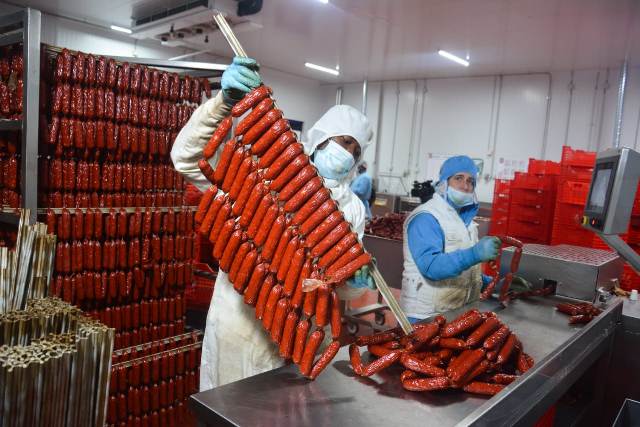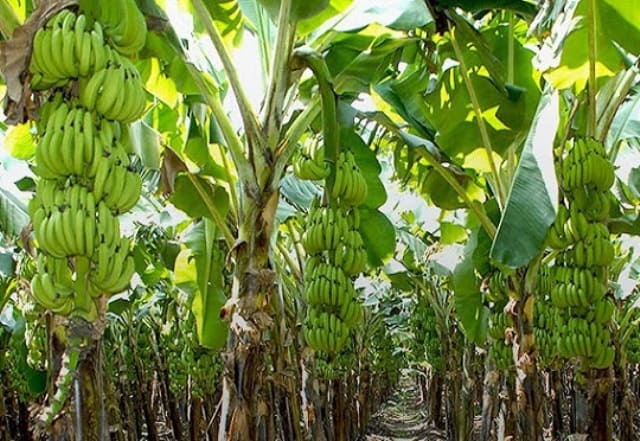The Angolan government has big plans to position Angola among the main African agricultural producers, and the state is allocating more than US $3 billion to make this a reality. The Southern African nation has been working to diversify the economy away from oil revenues and is redirecting some serious money into the country’s next big bet – agriculture.
The government anticipates economic growth of 3.5% between 2023 and 2027, all driven by economic diversification, especially agribusiness. Angola has the land to become a big agricultural player in Africa, with some 58 million hectares of highly fertile arable land which allows for at least two annual harvests. Given the good weather, excellent growth climate and Angolan President João Lourenço’s determination to diversify the economy, boost production and create more employment opportunities – Angola’s agricultural growth is certainly something to watch.

The government has already approved Planagrão (National Plan for the Promotion of Grain Production) and allocated US $500 million per year to the project with an equivalent amount for infrastructures and access to the production areas.
Planagrão, which is entering its pilot phase, will be managed by the Development Bank of Angola (BDA) during its five-year implementation period.
The plan will focus on developing mainly wheat, rice, soy and corn crops. In 2021 Angola produced around about 3.14 million tons of grains but Planagro will significantly boost this number, as from 2027 these crops will produce six million tons of these cereals per year.
Initially, Planagrão will be developed in the provinces of Moxico, Lunda Norte, Lunda Sul and Cuando Cubango, over more than two million hectares.

Agro-livestock units and agricultural product processing industries are also receiving large cash injections to boost these sectors. The government is channelling US $300 million to Planapescas (National Plan for the Promotion of Fisheries) and another US $300 million towards livestock to support animal production and derivatives. In total more than US $3 billion has been allocated, including funds for public infrastructure to reach the private sector to put Angola among the African top agricultural producers. Project funding is secured through financing lines from the Development Bank of Angola.
Dr Manuel Francisco Pedro, the Chairman of the Board of Directors of Angola’s Luanda-Bengo Special Economic Zone (ZEE) says, “Our country has a vast extension of highly fertile land with ample space for the installation of agro-industrial units. We can grow everything from fruit – like bananas, pineapple, mango, papaya, pitaya, and strawberries, to vegetables such as lettuce, tomatoes, and cabbages. And there are large spaces for pastures, with its waterways, so we have the means to expand our agricultural sector.”
Pedro oversees the ZEE, which has two reserves. The Viana Reserve is set over 4700 hectares and is divided into four quadrants, with two fully developed quadrants. The ZEE is working on developing the remaining quadrants. Currently, the Viana Reserve hosts 166 industrial and commercial units and has 7872 employees. It is Angola’s largest space for industrial projects, with a commercial hub, housing projects, green areas, and 138km of roads.

The second reserve is the Uala Agro-Industrial Reserve for agricultural and food processing projects. The Uala Reserve is still at an embryonic stage. Pedro says, “We are working on attracting investment to our Uala Reserve, which is over 2 800 hectares of fertile land. We are working with the private sector to develop the land with the necessary infrastructure such as roads, irrigation and electricity. The plan is to target companies primarily in agriculture and food processing, light and heavy manufacturing industries, as well as digital technology and pharmaceutical industry. We are focused on specific country target markets namely; China, Portugal, India, USA, United Arab Emirates, United Kingdom, South Africa, Nigeria, Côte d’Ivoire, Republic of Congo, Democratic Republic of Congo, Egypt, Algeria, Ethiopia, and Uganda.”
Angola’s agricultural efforts will be further enhanced by the government’s infrastructure construction plan for the country. The objective is to reach 9.9 GW of installed generation capacity and a 60% electrification rate by 2025. The government is betting on renewable energies, mini-hydro, natural gas for combined cycle and green hydrogen, which is part of the Angola 2025 Energy Strategy.
Dr Pedro says, “There are usually heavy bureaucracies involved in getting the land, but we have simplified the process for investors. At the ZEE, our Guiché de Apoio ao Investidor or ‘Investor Support Office’ (GAI) is a one-stop shop simplifies doing business in Angola and has all the necessary business administration offices in one building so you can sort out your taxes, banking, licenses or municipal accounts.”
He adds, “The ZEE offers exceptional incentives, and Angola’s current investment laws are favourable for investors with excellent tax incentives and benefits. We are ready to get to work. We just need the right partner who wants to grow with us.”
The Viana Reserve is already home to investors working in agribusiness and food processing. These companies are:
- Kaheel Agriculture Angola assembles Massey Ferguson tractors and agricultural implements. Inaugurated in 2020, it employs 300 workers. They can assemble 10 to 15 tractors daily and have also launched an onsite training centre.
- Quinta de Jugais, is a meat processing plant that is owned by a Portuguese-based company. The factory is set over 8000m2 and has 140 employees. Inaugurated in February 2022, they use cutting-edge technology to produce 30 tons of charcuterie per month for the Angolan consumer market.
- Horta Verde is Angola’s first hydroponics production centre and is set over 3600m2. They cultivate plants without using soil and grow various aromatic herbs and tomatoes with high freshness criteria.
- Yoni Ben Comercio E Industria Lda was started with a US $25 million investment. They produce 6 tons of pasta per hour, supplying Angola and neighbouring countries with pasta products. The factory also has two onsite milling facilities one for wheat flour, the raw material for the pasta, and a corn milling facility.


